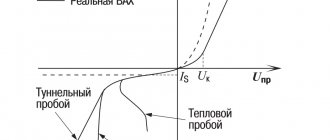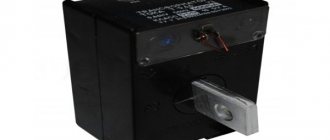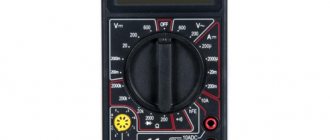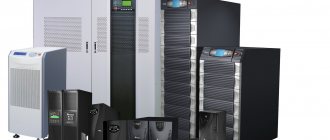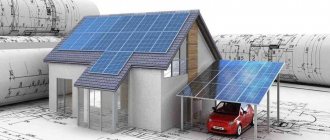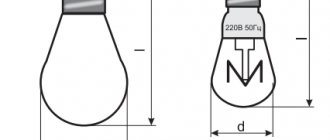- November 27, 2019
- Tools and equipment
- Gennady Rostov
Uninterrupted electricity is an unattainable ideal. Difficulties in supply arise due to natural anomalies, wear and tear of equipment, and broken transmission lines. The solution to this problem is an autonomous energy source. All that remains is to decide which generator to choose for your home and how to calculate the power required to operate electrical appliances.
General characteristics of electric generators
You can determine which autonomous source of electricity to choose based on its characteristics.
Type of use:
- basic;
- spare;
- emergency.
Location:
- in room;
- in a special casing;
- outdoors in an open area.
Unit type:
- petrol;
- diesel;
- gas.
Control type:
- auto;
- starter;
- manual start.
Number of phases:
- three-phase;
- single-phase.
Type of cooling:
- air;
- liquid.
To decide how to calculate the power of a generator for a home, you need to select the sum of the energy capacities of the devices used, taking into account the starting currents. If you make the wrong choice, the unit will operate at maximum capacity, consume excess fuel and fail prematurely.
Basic faults
Failures of the “on-board power plant” are caused by improper operation of the vehicle, exhaustion of friction parts, or failure of the electrics. First, visual diagnostics are carried out and extraneous sounds are identified, then the electrical part is checked with a multimeter (tester). The main faults are summarized in the table:
| Breaking | Cause | Repair |
| whistling, loss of power at high speeds | insufficient belt tension, bearing/bushing failure | tension adjustment, bushing/bearing replacement |
| undercharge | regulator relay is faulty | relay replacement |
| recharge | regulator relay is faulty | relay replacement |
| shaft play | bearing failure or bushing wear | replacement of consumables |
| current leakage, voltage drop | diode breakdown | replacing rectifier diodes |
| generator failure | burning or wear of the commutator, breakage of the excitation winding, stuck brushes, jamming of the rotor in the stator, breakage of the wire leading from the battery | eliminate the indicated breakdowns |
During diagnostics, the tester measures the generator voltage at different engine speeds - at idle, under load. The integrity of the windings and connecting wires, the diode bridge and the voltage regulator is checked.
How to choose a generator according to power for your home
Minimum energy consumption is the sum in watts of the rating data of household appliances, taking into account inrush currents. To operate the unit, a reserve is needed, so the resulting value increases by 20%. Calculating generator power for a home begins with determining permanent connection devices. Next, information on periodically used devices is added to the calculation, and the required power of the mobile station is obtained. Information on the nominal and starting energy consumption of devices and tools is presented in the table.
| Name | power, kWt | Starting power, kW |
| Video recorder | 0,1 | 0,11 |
| Columns | 0,03 | 0,033 |
| Coffee maker | 1,2 | 1,8 |
| Incandescent lamp | 0,1 | 0,1 |
| Microwave | 1 | 2 |
| Energy saving lamp | 0,012 | 0,012 |
| Mixer | 0,3 | 0,45 |
| Freezer | 0,7 | 2,1 |
| Music Center | 0,2 | 0,22 |
| Laptop | 0,05 | 0,055 |
| Heater | 1,5 | 1,65 |
| Personal Computer | 0,4 | 0,44 |
| Dishwasher | 1,5 | 2,25 |
| Printer | 0,35 | 0,385 |
| Vacuum cleaner | 1,5 | 1,65 |
| Washing machine | 4 | 6 |
| Phone charging | 0,025 | 0,025 |
| Iron | 1 | 1,1 |
| Iron with steamer | 1,25 | 1,375 |
| Hairdryer | 1 | 1,1 |
| Fridge | 0,2 | 0,6 |
| TV | 0,25 | 0,275 |
| Sewing machine | 0,1 | 0,11 |
| Electric shaver | 0,02 | 0,022 |
| Electric kettle | 2,5 | 2,75 |
| Concrete mixer | 1,32 | 3,96 |
| Electric drill | 0,5 | 0,75 |
| Compressor | 2,2 | 6,6 |
| Brush cutter | 0,5 | 0,75 |
| Belt Sanding Machine | 1 | 3 |
| Electric jigsaw | 0,4 | 0,6 |
| Lawnmower | 1 | 1,5 |
| High pressure washer | 3,5 | 10,5 |
| Emery | 0,4 | 0,6 |
| Heating pump | 0,1 | 0,3 |
| Sprayer | 0,6 | 0,9 |
| Jackhammer | 3 | 9 |
| Hammer | 0,7 | 1,05 |
| Submersible pump | 1,5 | 4,5 |
| Spotlight | 0,5 | 0,55 |
| Electric planer | 0,7 | 1,05 |
| Trimmer | 0,5 | 1,5 |
| Welding transformer | 3,5 | 14 |
| Chain Saw | 1,5 | 2,25 |
| Cycling machine | 2 | 3 |
| A circular saw | 1 | 1,5 |
| Sander | 0,175 | 0,2625 |
| Grinding machine | 0,45 | 0,675 |
| Electric stove | 1,2 | 1,32 |
Let's look at how to calculate the power of a generator for a private home.
Always on household appliances:
- fridge;
- freezer;
- lighting from 10 energy-saving lamps;
- computer;
- TV;
- heating system pump.
Periodic use devices:
- microwave oven;
- washing machine;
- vacuum cleaner;
- Dishwasher;
- iron;
- electric kettle.
Sum of equipment capacities from the first list:
0.6 + 2.1 + 0.12 + 0.44 + 0.275 + 0.3 = 3.835 kW.
To operate the generator, you need to increase the obtained value by 20%:
3.835 × 1.2 = 4.602 kW. For constantly switched on devices, a 5 kW unit is sufficient.
The sum of the capacities of household appliances from both lists, increased by 20%:
(3.835 + 2.0 + 2.25 + 6.0 + 1.65 + 1.1 + 2.75) × 1.2 = 23.502 kW. Thus, the power of a gasoline generator for a home, without restrictions on the use of electrical appliances, requires at least 23.5 kW.
Gasoline generator
The device uses AI-92 as fuel. The operating life of a single-cylinder design without failure is from 2500 to 4000 hours and a two-cylinder design is more than 5000 hours. The power of units with a four-stroke engine is from 1 to 15 kW. The generator is used during emergency power outages for up to 8 hours. Despite the loss in durability and reliability compared to units using other types of fuel, the demand for gas generators is good due to the low price.
Generator advantages:
- small dimensions;
- reduced noise level;
- readily available fuel;
- startup and operation at negative temperatures;
- simple maintenance;
- low price.
Disadvantages of the device:
- high cost of electricity;
- gasoline decomposition when stored for more than 6 months;
- overheating during long hours of operation.
The synchronous type gasoline generator engine allows you to maintain the quality of the current under loads. The fuel tank capacity of 10 to 25 liters allows the unit to operate for up to 12 hours without refueling. Overload and short circuit protection extends service life before failure.
So, which generator to choose for emergency power supply? The decision must be made taking into account the following points:
- place of use;
- power calculation;
- manufacturer selection;
- familiarization with technical characteristics;
- studying reviews from device users to select the final option.
Examples of gas generator models:
- Inverter-type devices have a stable current frequency and voltage, which is suitable for powering sensitive devices. The device can operate at half the installed power. Example - HAMMER GN800 generator, runs on a mixture of gasoline and oil in a ratio of 1 to 50, weighs 18 kg. The device is suitable for going out into nature or powering a trade tent for 6 hours on one refill.
- A unit with a synchronous alternator copes with peak loads 1.65 times higher than the nominal value and is suitable for emergency power supply of household appliances and tools. Example - PATRIOT Max Power 5.5 kW generator, runs on AI-92 gasoline, weighs 66 kg, supports powering devices with electricity for 8 hours.
- The EUROPOWER gasoline generator with a rated power of 14.5 kW is a mode in which the station operates without excess load. For single-phase devices the coefficient is indicated - 1.0, three-phase - 0.8. The unit is suitable for power supply to a cottage or store; the operating time before refueling is 10 hours. Requires periodic shutdown for cooling.
Choosing a generator for a passenger car
Due to the different diameters of the V-belt drive pulleys, the generator is given a higher angular speed compared to the crankshaft speed. The rotor rotation speed reaches 12 - 14 thousand revolutions every minute. Therefore, the generator resource is at least half that of an internal combustion engine car.
The machine is equipped with a generator at the factory, so when replacing, a modification with similar characteristics and mounting holes is selected. However, when tuning a car, the owner may not be satisfied with the power of the generator. For example, after increasing the number of consumers (heated seats, mirrors, windows), installing a subwoofer, an audio system with an amplifier, it is necessary to select a new, more powerful generator or install a second electrical appliance complete with an additional battery.
In the first case, you should select a power sufficient to recharge the battery with a 15% margin. When installing a second generator, the initial and operating budget increases dramatically:
- for an additional generator you will have to install an additional pulley on the crankshaft;
- find a place to mount the body of the electrical device so that its pulley is located in the same plane as the crankshaft pulley;
- maintain and change consumables of two “mobile power plants” at once.
With the advent of brushless generator models, some owners are replacing the standard device with this device.
Diesel generator
The station operates without stopping for a long time and is used as a backup or main source of electricity. The service life of diesel units with liquid cooling is up to 40,000 hours. How to choose a generator for your home and calculate the power is determined taking into account the starting currents of household appliances and tools. For units with an asynchronous motor, the quality of the current decreases under load. This characteristic is taken into account when calculating the power of a generator for a home.
Advantages of the device:
- long work without a break;
- low fuel consumption;
- versatility of use;
- easy maintenance.
Disadvantages of diesel generators:
- at negative temperatures, heating is required;
- increased noise during operation of the unit;
- a constant load of at least 30% of the rated power is required;
- diesel fuel quality requirements;
- cost of the unit.
The scope of use of generators is from private households to construction sites. An economical and reliable diesel station as a source of electricity.
Characteristics of diesel generator models:
- An example of a backup type unit is FUBAG DS 3.0 kW, suitable for periodic work with power tools and for lighting up to 9 hours in a row. The device has handles and wheels for transportation. The 12.5 liter fuel tank reduces the full load weight to 67 kg. The fuel consumption of the unit is two times lower than that of a gas generator.
- Diesel generator CTG AD-42RES 30 kW, voltage - 380 V. The device can power up to three devices in single-phase mode at a third of the power - 10 kW, three-phase equipment - 30 kW. One filling of diesel fuel is enough for 12 hours of continuous operation. The unit has a noise-proof casing and water cooling, and supports automatic switching on during power outages.
Design Features
The operating principle of a car generator is based on the effect of electromagnetic induction, which makes it possible to receive an electric current by inducing and then changing the magnetic field around the conductor. To do this, the generator contains the necessary parts:
- rotor - a coil inside two pairs of multidirectional magnets, receiving rotation through a pulley, and direct current to the field windings through brushes and commutator rings
- stator - windings inside the magnetic circuit in which alternating electric current is induced
- diode bridge – rectifies alternating current into direct current
- voltage relay - regulates this characteristic within 13.8 - 14.8 V
Rice. 2 Generator design
When the engine is not running, at the moment of starting it, the excitation current is supplied to the armature from the battery. Then the generator begins generating electricity on its own, switches to self-excitation, and completely restores the battery charge while the car is moving.
At idle speed, recharging does not occur, but the on-board network and all its consumers (headlights, music, air conditioning) are provided in full.
Stator
The most complex part of a generator is the stator structure:
- from transformer iron 0.8 - 1 mm thick, plates are cut out with a stamp;
- packages are assembled from them (welding or fastening with rivets), 36 grooves around the perimeter are insulated with epoxy resin or polymer film;
- then 3 windings are placed in bags, fixed in the grooves with special wedges.
Rice. 3 Generator stator
It is in the stator that alternating voltage is generated, which the car generator later rectifies into direct current for the on-board network and battery.
Rotor
When using rolling bearings, the journal is hardened, and the shaft itself is created from alloy steel. A coil covered with a special dielectric varnish is wound on the shaft. Magnetic pole halves are placed on top of it and secured to the shaft:
- look like a crown;
- contain 6 petals;
- are made by stamping or casting.
Rice. 4 Generator rotor
The pulley is fixed on the shaft with a key or a nut with a hex key. The power of the generator depends on the thickness of the excitation coil wire and the quality of the varnish insulation of the windings.
When voltage is applied to the field windings, a magnetic field appears around them, interacting with a similar field from the permanent pole halves of the magnets. It is the rotation of the rotor that ensures the generation of electric current in the stator windings.
Current collection unit
In a brush generator, the structure of the current collection unit is as follows:
- the brushes slide along the commutator rings;
- they transmit direct current to the excitation winding.
Electrographite brushes wear out less than copper-graphite modifications, but a voltage drop is observed on the collector half-rings. To reduce electrochemical oxidation of rings, they can be made of stainless steel and brass.
Rice. 5 Generator current collection unit
Since the operation of the current collection unit is accompanied by intense friction, brushes and commutator rings wear out more often than other parts and are considered consumables. Therefore, they are quickly accessible for periodic replacement.
Rectifier
Since the stator of an electrical appliance generates alternating voltage, and the on-board network requires direct current, a rectifier is added to the design, to which the stator windings are connected. Depending on the characteristics of the generator, the rectifier unit has a different design:
- the diode bridge is soldered or pressed into horseshoe-shaped heat sink plates;
- The rectifier is assembled on a board, heat sinks with powerful fins are soldered to the diodes.
Rice. 6 Generator rectifier
Rice. 7 Diode bridge option with independent radiators
The main rectifier can be duplicated by an additional diode bridge:
- sealed compact unit;
- dida-pea or cylindrical shape;
- inclusion in the overall scheme by small buses.
The rectifier is the “weak link” of the generator, since any foreign body that conducts current, accidentally falling between the heat sinks of the diodes, automatically leads to a short circuit.
Voltage regulator
After the alternating amplitude is converted into direct current by the rectifier, the generator power is supplied to the voltage regulator relay for the following reasons:
- The internal combustion engine crankshaft rotates at different speeds depending on the type of driving, travel distance and vehicle driving cycle;
- therefore, a car generator by default is not physically capable of producing the same voltage at different periods of time;
- The regulator relay device is responsible for temperature compensation - it monitors the air temperature, and when it decreases, it increases the charging voltage and vice versa.
The standard temperature compensation value is 0.01 V/1 degree. Some generators have manual summer/winter switches that are located in the interior or under the hood of the car.
Rice. 8 Voltage regulator
There are voltage regulator relays in which the on-board network is connected to the generator excitation winding with a “–” wire or “+” cable. These designs are not interchangeable, they cannot be confused; most often, “negative” voltage regulators are installed in passenger cars.
Bearings
The front bearing is considered to be on the pulley side, its housing is pressed into the cover, and a sliding fit is used on the shaft. The rear bearing is located near the collector rings; on the contrary, it is mounted on the shaft with interference; a sliding fit is used in the housing.
In the latter case, roller bearings can be used; the front bearing is always a radial ball bearing with a one-time lubricant applied at the factory, which is enough for the entire service life.
Rice. 9 Generator bearing kit
The higher the generator power, the greater the load the bearing race experiences, and the more often both consumable parts need to be replaced.
Impeller
The friction parts inside the generator are cooled by forced air. To do this, one or two impellers are placed on the shaft, sucking air through special slots/holes in the product body.
Rice. 10 Generator impeller
There are three types of air-cooled car generators:
- if there is a brush/collector ring assembly and the rectifier and voltage regulator are moved out of the housing, these components are protected by a casing, so air intake holes are created in it (position a) of the lower circuit;
- if the arrangement of the mechanisms under the hood is dense, and the air surrounding them is too hot to properly cool the internal space of the generator, a specially designed protective casing is used (position b) in the lower figure;
- in small-sized generators, air intake slots are created in both housing covers (position c) in the bottom figure).
Rice. 11 Options for generator air cooling schemes
Overheating of the windings and bearings sharply reduces the performance of the generator, and can lead to jamming, short circuit and even fire.
Frame
Traditionally, for most electrical appliances, the generator housing has a protective function for all components located inside it. Unlike a car starter, the generator does not have a tensioner; the sagging of the transmission belt is adjusted by moving the housing of the generator itself. For this purpose, in addition to the mounting tabs, the body has an adjustment eye.
The body is made of aluminum alloy and consists of two covers:
- The stator and armature are hidden inside the front cover;
- Inside the back cover there is a rectifier and a voltage regulator relay.
Rice. 12 The generator housing consists of two covers
The correct operation of the generator depends on this part, since a rotor bearing is pressed inside one cover, and the belt is tensioned in the eye of the housing.
Gas generator
The gas generator uses liquefied or pipeline gas as fuel. Connecting the unit to the main line and servicing during operation is associated with material costs for approval and operation of the gas service. Calculation of power as for diesel and gasoline units, taking into account the energy consumption of the devices used.
Advantages of the gas generator:
- fuel cost;
- no toxic exhaust;
- performance;
- low noise level;
- reliable operation.
Flaws:
- dependence on uninterrupted gas supply;
- installation and maintenance costs;
- placement in a heated place;
The power of gas generators is from 1.5 to 3 thousand kW. Units less than 6 kW have air cooling, while high-capacity stations have water cooling. These units are beneficial when there is a stable main gas supply.
An example of a GREENGEAR GE 5 kW unit model for backup electricity supply, runs on gas, both main and liquefied. The noise level is 65 decibels, which is the same level as human speech. The device has an asynchronous alternator, which maintains the accuracy of the output voltage. This is required for connecting sensitive electronic devices and motors.
Is it better to choose a single or three-phase generator for a private home?
Perhaps the answer is obvious to many. However, there are several nuances.
Actually, the choice of a three or single-phase generator is mostly determined by the layout of the electrical wiring in the house. If the circuit is three-phase, then a three-phase generator will suit you just fine (but not all generators; I’ll explain why later in the text). If the house is connected to a single-phase network, then there is no need to rack your brains here - take a single-phase one.
So, if you have a single-phase network, then the choice is obvious and for a backup power supply it is enough to consider a power of 3 kW (further calculations why this power is needed). With three phases, this option is allowed with a reservation. The thing is that three-phase generators produce the declared power only in all phases. Those. for distributed three-phase load. Whereas if one phase is overloaded, the generator will turn off the load.
Example: a 6 kW generator produces the declared power only when the same current passes through all three phases. Those. 16 amps per phase.
Now let’s imagine that according to your load distribution scheme, the kitchen lighting, as well as all the sockets in this room, “hangs” on phase “A”. Your lights are on, your TV and computer are working. You turn on the kettle and the generator begins to twitch nervously due to overload in one phase. If the current in this phase exceeds the maximum (16 A), the machine on the generator will turn off.
From the above example, we can conclude that in order for the generator to work as well as a regular network, the power of the generator must be equal to the input power for which your network is designed. Typically this is 15 kW. But here the price tag for the generator will amount to several hundred thousand, occupy half the garage, and make noise like a tractor when operating. Do you need it!?
What solution could be:
- Choose a 3-phase generator with sufficient power of 7-9 kW to cover basic needs (lighting, heating pumps, and one heating device to choose from). Accordingly, it is necessary to control the simultaneous inclusion of consumers.
- Initially, distribute the three-phase system at home in such a way that the main consumers that need to be constantly powered “hang” on one phase. That. we will be able to reserve one phase and we will need a single-phase generator. It's cheaper in the long run. It’s unlikely that anyone will bother like that.
- The third option is to buy a generator with the ability to extract the same power from both three phases and one. This type of generator will be more expensive, but solves the problem of phase imbalance. Example - Loncin LC10000D-AS.
What conclusion can be drawn regarding the choice of 1 or three-phase generator. With a single-phase connection at home - 1 phase generator (understandable).
For three-phase distribution at home, we look at models from 7 kW of power, or better yet, choose a generator with the same power in all phases.
Welding generator
To carry out welding work in the absence of a network connection to electricity, special models of gasoline and diesel mobile stations are used. These units can withstand starting welding currents.
Device advantages:
- installation anywhere;
- resistance to loads;
- use for connecting devices and tools.
Negative characteristics:
- small resource of work;
- inability to simultaneously connect welding and other tools;
- noise level.
How much power a generator needs is determined by the welding current required for the work.
An example of a gasoline welding unit with a rated power of 5 kW is FUBAG WS 230 DC ES. The device has manual and electric start, output current 230 A, electrode diameter from 1.6 to 5 mm. The generator allows welding work to be carried out for 9 hours on one fuel fill.
Which generator is better to choose for your home with or without autostart?
Perhaps everything is clear here. If there is a man at home and there is no desire to overpay, then you can take a budget generator with manual start and put a regular switch on two outputs. That's all. The advantage of such a connection is savings of about 35-40 thousand rubles. Cheaper than a generator, no need for an AVR.
Accordingly, if your wife and children are at home, and you are leaving the Moscow region for Moscow. It might be better to overpay and have it automatically start when there is a power outage. Here you will need a generator with an electric starter and, in addition to everything, an ATS (automatic transfer of a reserve about this device in more detail in another article).
As usual, everything is not so simple. In order for the generator to start exactly when needed, it is necessary to monitor the fuel level. If the generator sits for a year or more without a single start, there is a high probability that at the moment of urgent need it will not start at the command of the controller. Plus, rechargeable batteries tend to lose capacity over time. you need to look at the condition.
It is worth mentioning that a generator with up to 5 kW of power (nominal) is relatively easy to start manually, but with a higher power you may not have the courage and it is better to have an electric starter. Empirically tested on many products.
For reference: 5 kilowatt generators have an engine that produces 13 hp, but a 6 kW generator produces 15 hp. The cylinder volume in the first case will be 390 cubic meters. cm in the second 420 cc. cm.
Generator control type
Electric generators are equipped with one of three types of control or a combined system. A simple way is to start manually, which requires physical effort and skill. Generators of all types with power up to 7 kW are equipped this way. The advantages of manual control are low price and reliability.
Units with a power above 7 kW usually have a starter type of start, combined with manual control. The device is started by pressing a button or turning the key. The starter is powered by a battery. Such a start is more expensive than a manual one, but the unit is controlled without physical effort.
Automatic control starts the generator when there is a power outage and provides power to household appliances and security systems even in the absence of the owners of the house. Installing equipment on low-power gasoline and diesel generators is unprofitable due to the high price. After the main supply is restored, the automation will automatically turn off the unit. The disadvantages, besides the cost of installing the system, is the need to install an electrical station in the room, otherwise the autostart does not work.
An example of calculating generator power for a summer residence
In this example, we calculate how much power a generator is needed for a country house in a remote area that does not have a connection to the main power grid. Water comes from a well on the site. Before choosing a generator for your home and calculating the power, a list of electrical appliances that are necessary for comfort is compiled.
List of household appliances taking into account starting currents, power in kW:
- interior lighting - 0.5;
- street spotlight - 0.5;
- submersible pump - 3.0;
- air conditioner - 1.5;
- instantaneous water heater - 1.2;
- refrigerator - 0.6;
- TV - 0.275;
Appliances for periodic use, power in kW:
- microwave oven - 2.0;
- electric kettle—2.2;
- laptop - 0.055;
- vacuum cleaner - 1.65;
- phone charger - 0.025;
- drill - 0.75;
- electric saw - 1.5;
The calculation takes into account that 80% of the maximum generator power is used. The amount of energy consumption of devices for constant use in the country is 7.575 kW. It is reasonable to use the rest of the household appliances in turn. Of the listed devices, the most powerful is an electric kettle. Final value: (7.575 + 2.2) / 0.8 = 12.22 kW. It remains to determine what power generator to take for your home.
The cottage is intended for seasonal living, so a mobile station capable of long-term operation without stopping is required. Diesel or gas units are suitable for this. The TSS AD-12S electric generator, with water cooling and an operating time of up to 20 hours, is suitable for the given power. Tank volume is 54 liters, average fuel consumption is 2.5 l/hour. Rated power - 12 kW, peak - 15 kW.
As an alternative option for power supply to a dacha farm, the FAS-13 unit, which runs on liquefied gas, is suitable. The model of the engine used is VAZ 21067, water-cooled, has an automatic start function. The maximum power is 13 kW with a gas consumption of 0.45 m3/hour; a 50-liter cylinder is enough for a day of continuous operation of the unit.
Electrical diagram
Manufacturers take into account the specific number of consumers in a car model, so in each case an individual electrical circuit of the generator is used. The most popular are 8 diagrams of “mobile electrical installations” under the hood of a car with the same designation of elements:
- generator block;
- rotor winding;
- stator magnetic circuit;
- diode bridge;
- switch;
- lamp relay;
- regulator relay;
- lamp;
- capacitor;
- transformer and rectifier unit;
- battery;
- Zener diode;
- resistance.
Rice. 15 Scheme 1
In schemes 1 and 2, the exciting winding receives voltage through the ignition switch so that the battery does not discharge when parked. The disadvantage is the switching of 5 A current, which reduces the service life.
Rice. 16 Scheme 2
Therefore, in diagram 3, the contacts are unloaded by the intermediate relay, and the current consumption is reduced to tenths of an ampere. The disadvantage of this option is the complex installation of the generator, decreased reliability of the design, and the switching frequency of the transistor increases. The headlights may blink and the instrument needles may shake.
Rice. 17 Scheme 3
In circuit 5, an additional rectifier is made from three diodes on the way to the excitation winding. However, when parking for a long time, it is recommended to remove the “+” from the battery terminal, as the battery may be discharged. But during the initial excitation of the winding at the moment of starting the internal combustion engine, the battery current consumption is minimal. Extinguish the zener diode, which is dangerous for the electronics of the machine.
Rice. 18 Scheme 5
For diesel engines, generators using circuit 6 are used. They are designed for a voltage of 28 V; the exciting winding receives half the charge due to connection to the “zero” point of the stator.
Fig 19 Scheme 6
In diagram 7, the discharge of the battery during long-term parking is eliminated by reducing the potential difference at the “D” and “+” terminals. An additional wing of the rectifier diode bridge was created from zener diodes to eliminate voltage surges.
Rice. 20 Scheme 7
Scheme 8 is usually used in Bosch generators. Here the voltage regulator is complicated, but the circuit of the generator itself is simplified.
Rice. 21 Scheme 8
Example of calculating generator power for a construction site
Sometimes the construction of a private house begins on a site that is temporarily not connected to electrical networks. In this case, the only way out will be an autonomous energy source. First, the necessary tools are prepared. Next, it is calculated what power generator to take for the house at the initial stages of construction.
Peak powers of the tools and equipment used:
- welding inverter 180 A - 6 kW;
- concrete mixer 120 l - 2.1 kW;
- electric jigsaw - 1.2 kW;
- circular saw - 1.5 kW;
- angle grinder - 1.2 kW;
- drill - 1.35 kW;
Since the unit does not work simultaneously with welding and other tools, power calculations are carried out separately. The sum of peak loads of construction tools, excluding the concrete mixer, is 5.25 kW, for a welding inverter you need 6 kW. The required peak power of the unit is 25% greater than the rated power: 5.25 × 1.25 = 6.6 kW.
The parameters are suitable for a welding gas generator from Ayerbe 7 kW, with manual start and alternating current 180 A. The capacity of the fuel tank is enough for 3 hours of operation, then the unit needs to be refueled. The weight of the device is 75 kg, which allows it to be delivered to the work site by a passenger car.
An alternative option is a diesel welding generator. The fuel consumption of the equipment is two times lower, and it lasts longer than gasoline equipment until it stops. For the case under consideration, an Italian unit of the MOSA brand with a rated power of 6.5 kW, with an alternating welding current of 190 A, is suitable. The mobile station has air cooling, is automatically started by a button, and diesel fuel consumption is 1.5 l/hour.
Fuel consumption
An economic parameter that affects the owner’s budget. The most economical electric generators include inverter-type units, the fuel consumption of which does not exceed 1 l/h. Fuel consumption depends on power. Two-kilowatt models consume about 2 l/h, three-kilowatt models - from 3 to 4 l/h, etc. The most powerful household generators require more than 5 l/h for normal operation. Backup power supply to a home with a large number of electrical appliances is accompanied by large financial costs.
Generator power calculation for travel
In order not to give up convenience on a trip to nature, you can use an autonomous energy source. The car battery is not suitable for intensive use, as it will quickly discharge and it will be difficult to start the car. A small gasoline generator will create comfortable conditions for outdoor recreation.
Before choosing a unit, make a list of household appliances that you take on the road:
- laptop - 0.055 kW;
- phone charger - 0.012 kW;
- electric razor - 0.02 kW;
- hair dryer - 0.45 kW;
- portable lighting - 0.2 kW;
- music center - 0.2 kW.
To determine what power generator to use, the energy consumption of the equipment is summed up. and the result increases by 25%: (0.055 + 0.012 + 0.2 + 0.2) × 1.25 = 0.58 kW. The hair dryer and razor are used separately from other devices.
To provide electricity, a CHAMPION 0.8 kW inverter petrol unit is suitable. The noise from such a device is low, weight is 12 kg, continuous operation is up to 5.5 hours, fuel consumption is 0.5 l/hour. The generator is small in size and fits in the trunk of a car, and a 12 V outlet allows you to charge the car battery.
Mobile power plants - generators - are widely used for autonomous energy generation. The unit is selected for the specific equipment and type of fuel used, and proper calculation of power will ensure the device operates without failure.



